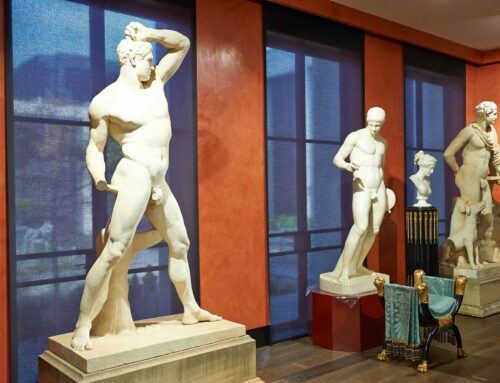The 19th century in France witnessed a flourishing of artistic design and innovation, and beautifully shaped furniture inspired by Louis XVI design, such as this fine quality side table, emerged as magnificent examples of furniture from this period. Adorned with inlays and gilded bronze, they exemplified the opulence and artistry of this period – these tables were not merely functional pieces of furniture, they were works of art that graced the homes of the French elite.
True to the quality of pieces from this era, this delightful side table has a quarter veneered and book-matched kidney shaped tulipwood top with satinwood string inlays with gilded bronze gallery, above a cross-banded frieze housing a single shaped drawer with an ormolu drop handle in the form of olive leaves supported on four square inlaid uprights meeting a cross-banded shelf above four turned tapering fluted legs terminating in bronze feet in the form of leaves.
Side tables from this era were often crafted from high-quality woods like tulipwood and satinwood providing a rich canvas for the intricate inlay work we see here. These inlays feature geometric designs that showcase the immense skill of the maker. However, what truly set furniture of this quality apart was the use of the gilded bronze gallery and ormolu mounts, handles and embellishments. Combined with beautiful inlay, the result was a table that revealed luxury and refinement.
19th century French side tables were versatile in their function. They could serve as tea tables, display surfaces for decorative objects, or even writing desks. The combination of stunning inlays and sparkling ormolu made them statement pieces, that could also be found in fashionable salons and drawing rooms.
Today, as lovers of fine French furniture, we consider such a piece a celebration of craftsmanship an embodiment of the 19th century French aesthetic, and of course, it adds a touch of elegance and sophistication to any home.
Browse similar antique tables.






